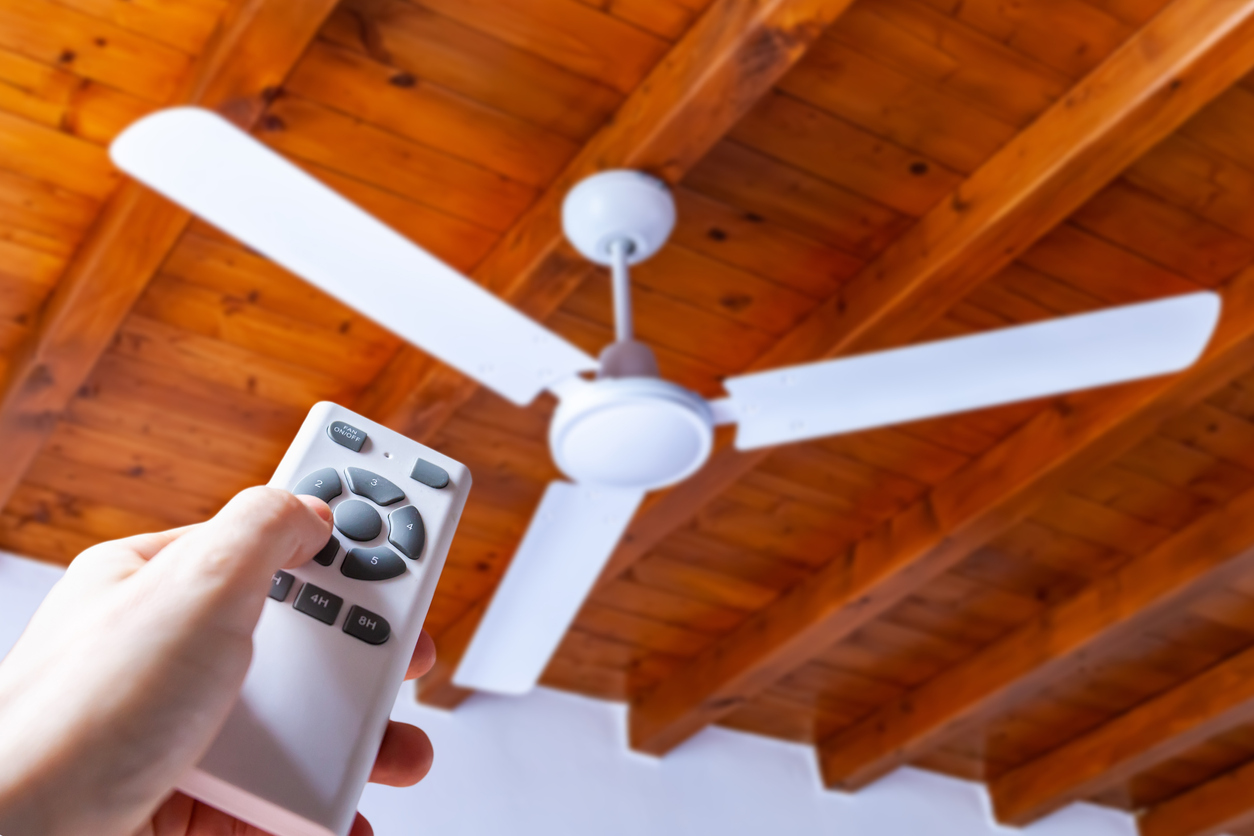As spring approaches, it’s time to think about your strategy for keeping cool efficiently during warm weather. One of the best ways to cool off and cut back on your utility bill is to employ your ceiling fans strategically. Read on to learn some pointers on effective fan use.
Why Use Ceiling Fans?
Ceiling fans can help you keep cool in the summer and warmer in the winter— that is, if you know how to use them properly. In the summer, when fan blades are switched on to turn counterclockwise, they help lift warm air toward the ceiling and away from where the occupants of a room are sitting. The blades also help push cool air from the air conditioner down to occupant level. In the winter, switch the blades to run clockwise and they will push warm air from central heating down to occupant level while lifting cool air to the ceiling.
Your ceiling fan in itself will not change the temperature. It makes you feel cooler by pushing a breeze against your skin as sweat evaporates, thus creating windchill. Likewise, a ceiling fan in winter won’t make the room warmer. So whenever you leave the room, regardless of the season, be sure to turn the ceiling fan off.
Measuring Effective Fan Use
So how efficient are ceiling fans? New fans have a label that displays their efficacy — or how much air flow is available for the amount of electrical energy that’s being used. A good measure of efficacy would be more than 100 cfm (cubic feet per minute) per watt; one that only delivers 30 cfm per watt would be considered inefficient. When you’re fan shopping, also remember that the ones with the biggest blades will deliver more airflow.
You can increase effective fan use if you turn up your thermostat in summer. You’ll feel cooler with the fans so you won’t need to run the AC as low. Ditto for winter. But bear in mind that fans only boost efficiency if you cut back on using power.
For more on effective fan use, contact Ace Hardware Home Services. We serve Dayton and the surrounding area.








